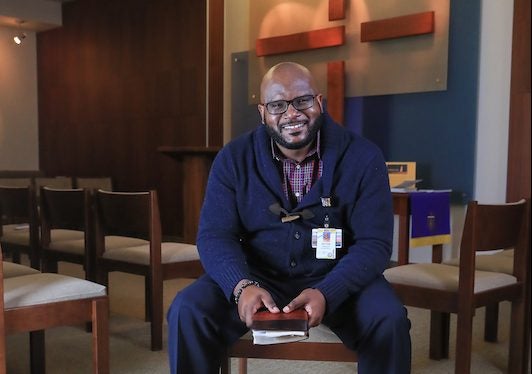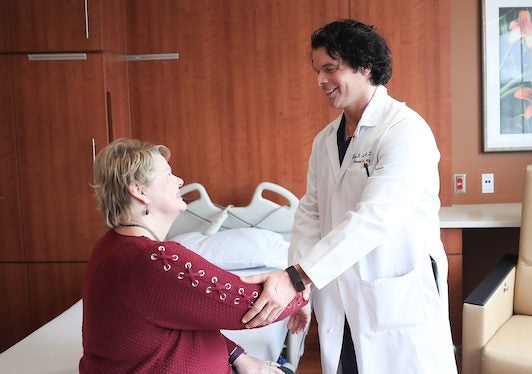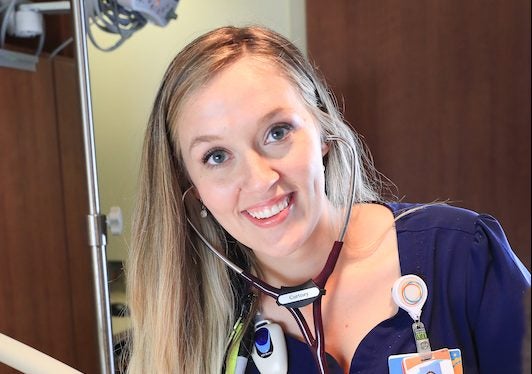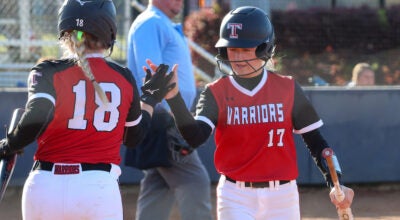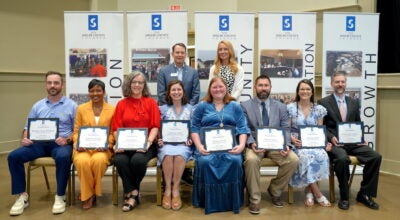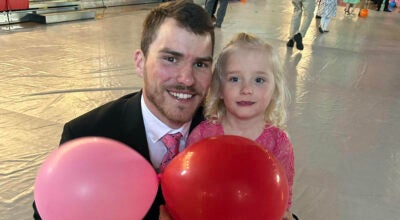PROFILE: Shelby Baptist Medical Center: Healers and hearers
Published 6:17 pm Friday, February 28, 2020
|
Getting your Trinity Audio player ready...
|
By SCOTT MIMS / Staff Writer
As the clock strikes 10 p.m., the corridors of Shelby Baptist Medical Center are dim and isolated. Visiting hours are over, and patients are resting. But in the odd silence you’ll also hear beeping monitors, the muffled clickety-clack of keyboards and the deliberate footsteps of nurses. Whether intentionally or not, the nightshift nurses, doctors, chaplains and the patients become a community of their own, each taken from his or her family to either receive or give much-needed care.
A calm in the storm
Victor Lewis is sitting on ready when most people are getting ready for bed. When that call comes, he knows it is most likely a death or a code blue. He is quiet as can be as he makes his way down the halls. It is a strange juxtaposition of quiet and high tension. As hospital chaplain, he tries to stay alert and fresh while presenting his best self to whatever situation he might encounter.
Family members of patients are often shaken by a situation no one wants to think about—a medical emergency involving a loved one. But Lewis steps into these scenarios every day. In essence, his job is to be the calm in the storm. “I bathe myself in prayer and meditation, reading the scripture and just trying to get myself ready for the day,” Lewis says. “I kind of put myself in the position to be mentally ready for what is ahead.”
Likewise he can often be found in the hospital’s chapel or office meditating. He gets a copy of the hospital’s census—a list of the total number of patients admitted on a given day—and starts praying for each patient, hospital staff members and family members of patients.
Upon meeting a patient or family, Lewis first tries to establish a personal connection with them by trading stories to distract them from the immediacy of the situation. “I have to create that safe space for them to share,” he says. “Chaplaincy at its best is providing presence and support during those difficult times like that. You can’t do this without loving people. I always try to put myself in their position and be sensitive to their needs and provide active listening as well. Sometimes they just want somebody to listen.”
This happened recently when a Canadian family was down the road from the hospital and the husband had a massive heart attack. Lewis listened as the man’s wife shared her pain, and he talked with their children and grandchildren. “We try to channel their fear to faith and their anxiety to hope,” he says. “Sometimes the pain may not be lifted, but peace can be inserted in the midst of pain. We don’t administer medicine, but we administer peace.”
But the hospital is often filled with joy too, and Lewis is there for that as he blesses and baptizes newborns when their families request it. For him, birth, like death, is a holy experience. Fittingly, “hospital” is a word that comes from “hospitality” in scripture, Lewis notes.
The kindness he emanates carries over to hospital staff members, who lean on Lewis for comfort, support and guidance related to work and other aspects of life. They could be dealing with financial difficulty or a family situation that distracts them from their job.
“We’re just a big family here. When they come on campus, I become their pastor,” he says.
Mending the broken
Should you find yourself in the Shelby Baptist emergency room late at night with a broken limb, it might be Dr. Jason Cobb that puts you back together. Whether a fracture, laceration or torn tendon, the doctor has a game plan. And if that doesn’t work, he has a plan B—and plans C, D, E and F.
As an orthopaedic surgeon, Cobb, a Pelham resident, sees each procedure as a kind of chess match where he has to think several moves ahead in order to prepare for any possible outcome. Or, in football lingo sometimes he has to call an audible. This is especially true if a surgery lasts for eight, 12 or 16 hours—there are lots of details and fundamentals that need blocking and tackling. “If you fail to plan, you’re planning to fail,” Cobb says. “I think that’s across the board, and there’s never been a greater truth.”
Cobb can be on call 24 hours a day, up to five days at a time. In some instances he isn’t called until a reasonable amount of X-rays or CT scans have taken place or even later if a patient can be stabilized until morning. But often, patients need to be addressed sooner rather than later. “If it’s a limb-threatening injury or if it’s an open fracture, oftentimes we come in and do those immediately,” says Cobb, a fellowship-trained traumatologist.
In a femur fracture, Cobb might be ready to roll with a rod but then encounter a component of the injury that goes down into the knee joint. At that point, he needs to be ready to use screws or switch to a plate if necessary. It all goes back to planning: “We coordinate personnel, coordinate implants and instruments to have everything available in the operating room—clamps, wraps, table, X-ray—how that’s set up in the room. It can make it easy on you or it can make it tough on you.”
Outside of the operating room, it’s also Cobb’s job to speak to family members. He often uses layman’s terms to help them understand the procedure. Sometimes Cobb will even draw a picture, if necessary. “If you can’t specifically write on the back of a cocktail napkin what’s going to happen, you need to take care of that,” he says. “I think that’s an important point.”
No matter the time of the day Cobb is drawing pictures or coming up with a Plan D, the big picture remains the same: “I don’t think there’s a greater field of gratification than orthopaedics because we fix things. It’s taking care of your community. That’s the big thing for me.”
The last to leave
If Cortney Myers’ nursing shift starts at 10 p.m., she’ll be there at 9:45 reviewing patients’ charts and whether they need a urine sample, flu shot, a specific type of medicine, you name it. In this time, she’s also checking the IV to make sure it is working properly, printing out medicine cards, highlighting information sheets and posting them in patients’ rooms.
“That way, they’re not quite as concerned,” Myers says. “I just try to get an idea of who the patient is and get a good gauge of what their expectations are. The most important thing with any hospitalization is educating. I try to get to know them and their history, and just to be there.”
Myers encounters many stroke patients in the intermediate medical care unit where she works, performing neurochecks and asking the patient basic questions such as where they are and what year it is.
But her job is more than just checking off a list of items, she says. She wants to see patients making progress, and don’t expect her to just let you lie there. “A lot of patients don’t realize you get conditioned from day one,” she says. “A lot of people just feel like they have to stay in bed. I’m a firm believer in you’ve got to keep moving to keep moving.”
For her, the most challenging part is getting patients out of the room. This involves setting little goals and getting to know people in their moments of vulnerability. Standing up and walking can help prevent pressure injuries and decrease the likelihood of an embolism or blood clot.
“A lot of people don’t realize, you’ve got to let your soul and your body catch up to each other, but it’s an active process,” she says.
When speaking with patients, Myers tries to be vocal yet respectful and understanding. “I think definitely attitude goes a long way,” she says. “I try to just view every patient as my own family. If this was your mother, would you want the patient sitting the way she is? Perspective is everything.”
And even though she’s arrived early, Myers is often the last nurse to leave because she’s always charting, advocating for her patients and preparing the transition for the next nurse. “I feel like I’d rather be in a room getting to know somebody. I like to be present, because if you’re there, you can develop that relationship. You can get to know these people,” she says.


